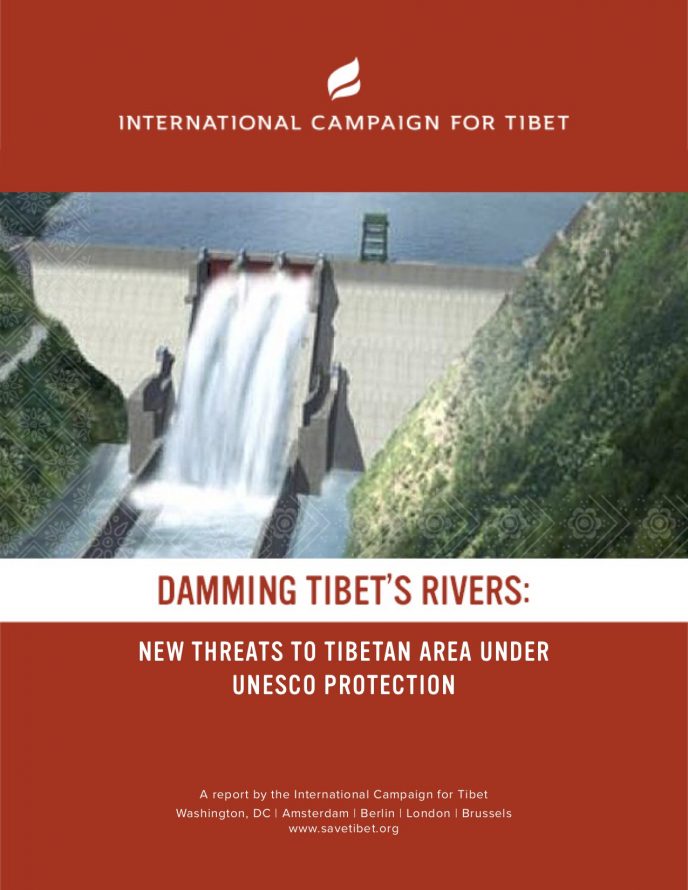Report summary
- The Chinese government plans to construct large hydropower stations in Tibetan areas, likely to have a negative impact on the environment and to lead to the relocation of thousands of local people. At least one project directly affects a UNESCO protected World Heritage site.
- An official report from early 2019 and published by Chinese government ministries, refers to specific hydropower dams that are planned, including the Longpan 6000-megawatt dam across the Tiger Leaping Gorge, directly adjacent to the UNESCO protected Tibetan area and World Heritage site of “Three Parallel Rivers” in Yunnan province.
- This dam was previously stalled following campaigns by Chinese environmentalists and warnings of potential massive landslides. Although the Chinese government report to UNESCO on the “Three Parallel Rivers” (November 2018) implies the construction of the Longpan dam is far from imminent, local sources have expressed concerns that construction of the Longpan dam across the Tiger Leaping Gorge will start this year. The dam poses an unprecedented danger to this vitally biodiverse area and will most likely lead to the relocation of local people.
- The Longpan dam is part of a cascade of eight dams along the middle reaches of the Drichu (Ch: Jinsha) river. It will be part of the at least 27 hydropower stations planned on the river that forms the headwater the Yangtze River (Ch: Changjiang). Hydropower projects in the upper reaches of the Drichu – government documents suggest 13 are on the plan – may have already had a negative impact on the UNESCO World Heritage site of “Three Parallel Rivers.” Their impact will significantly increase as dams are gradually completed. However, being geographically distant to the heritage site, they are excluded from UNESCO scrutiny.
- Images of the locations on the Drichu river reveal the extent of road and infrastructure construction required to transport heavy equipment into the sites, demonstrating that the damage done by dams is not limited to the rivers, and also affects the entire landscape. Until now, these areas were among the least disturbed habitats on earth.
- The official report from 2019 also included dams across Tibet, along the Yarlung Tsangpo (Eng: Brahmaputra, Ch: Yalu Zangbu jiang), the Machu (Eng: Yellow River, Ch: Huanghe) and the Gyalmo Ngulchu (Eng: Salween, Ch: Nujiang) rivers. They are either under construction or in planning, along with a rail and road expressway. The dams represent a serious threat to the Tibetan environment as the Chinese government continues to implement policies that are re-shaping its landscape, displacing Tibetans from their land and imperilling the fragile ecosystem of the world’s highest and largest plateau.
- Despite the risks posed by these dams, China may have succeeded in preventing potential criticism through its ‘elite capture’ of global institutions. For example, China’s powerful power grid and dam industry, headed by senior Chinese Communist Party (CCP) officials, was a sponsor of the UNESCO International Water Conference in Paris on May 13-14, 2019.
